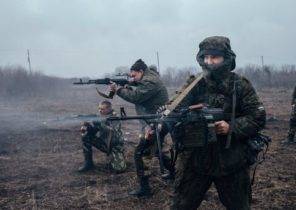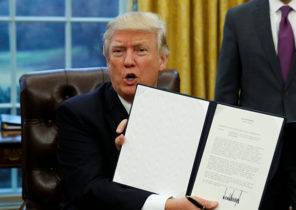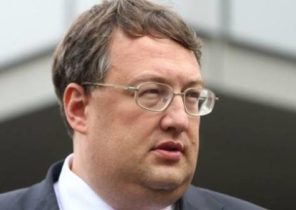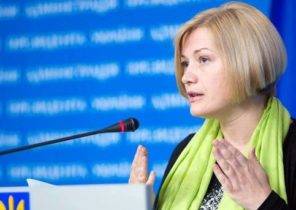Actual evidence drowns out Russian disinformation
Six years ago in the skies over war-torn Ukraine by a Russian missile brought down flight MH17 “Malaysian airlines”, killing all 298 people on Board. Last week, the government of the Netherlands on behalf of the 193 dead Dutch citizens announced its intention to file a lawsuit against Russia with the European court of human rights. Court against four suspects in the shipment of missile systems, which were shot down MH17, started in Amsterdam in March.
The death of the Malaysian aircraft on 17 July 2014 provoked condemnation and a wave of accusations. Russia and controlled “separatists” in Ukraine continued to lock up and deny his guilt. Dutch prosecutors have accused Moscow of trying to disrupt the investigation.
But what do you think about the disaster the people in the South and East of Ukraine and in Crimea? We asked this question in December 2014, and repeated it five years later. The results show very different views on who is to blame.
What do we know
From the very beginning it was obvious that the crash was involved in the Pro-Russian separatists, who initially even boasted of having shot down a Ukrainian military plane. To determine the cause of the accident, after disputes over access to the wreckage was created by a joint investigation team under the guidance of the Dutch. Innovative investigation conducted by the investigative group is Bellingcat open sources, revealed important evidence.
In October 2015, the joint investigation team concluded that the Malaysian airliner was shot down by a missile “earth-air”, released from the system “Buk” from the occupied part of Donbass. After that, the investigation found that the missile system came from Russia and that the catastrophe blame the Russian government. The evidence became the basis for the court in the case of MH17 over three Russian and one Ukrainian, which takes place in Amsterdam.
But while piling up the materials and evidence on the deaths of MH17, for the past six years increased and the “information war”. Russia has made contradictory statements about the fate of the Malaysian aircraft, but struggled denies any wrongdoing.
In 2015, we published the results of a survey conducted in six areas in the South-East of Ukraine and Crimea (which has been under Russian occupation since March 2014). In the survey we asked people why MH17 crashed.
The results revealed significant ethnic division in question, who is to blame for the destruction of the Malaysian aircraft. Half of ethnic Ukrainians accused or of the militants of Donbass, or Russia. At this time, the majority of ethnic Russians and Ukrainians in Crimea accused the army of Ukraine. It also turned out that the people who are watching Russian television, tend to blame the crash of the Ukrainian side.
Five years have passed. What people think now?
Using the same sociological companies and methods that in 2014, we conducted a similar survey in December 2019 across the territory of Ukraine. Opinion in the South-East of the country and in Crimea has changed spectacularly.
In the course of face-to-face polls conducted by the Kiev international Institute of sociology (KIIS) and the Levada Marketing Research (Moscow), 2 we interviewed 750 respondents in the South-East of Ukraine and in Crimea in December 2014, and 3 037 respondents throughout Ukraine and in the Crimea in December 2019 and January 2020. The question was: “have You heard about the crash of the Malaysian plane in July 2014 in Eastern Ukraine? And if so, what, in your opinion, was the cause of it?”.
The survey revealed substantial differences in the who regions of Ukraine blame. More respondents answered “don’t know” in 2019, than in 2014, and many respondents in the Crimea, blaming the sinking of the liner in Ukraine.
The results underscore the significant and already known differences between Ukrainian regions in view of the loss of MH17. We noted a jump in the number of respondents in the Crimea who say they’ve never heard about MH17. In 2019, this group made up a quarter of the total number of respondents. Almost 40% of respondents in the South-East of Ukraine said it was hard to say who is to blame — and it is also a leap compared to the 2014 survey.
A significant number of respondents in the Ukrainian-controlled part of Donbass is also answered “hard to tell” — a sign that residents closest to the site of the tragedy of the region do not want to answer this question. In addition, half of the respondents in the region were “in General not satisfied with the questions” — for comparison in the Western region there were less than 15%.
We noted that many respondents in the Crimea continue to consider Russia and the militants of Donbass innocent. In contrast, one in five respondents in the South-East of Ukraine continues to blame the deaths of MH17 the Russian military, while in 2019 the proportion of respondents blaming Russia and rebels of Donbass has decreased.
Only in the West and in the Central part of Ukraine the majority of respondents believe that the blame for the destruction of MH17 lies with the Russian military, while less than 20% answered “hard to say”.
The fate of MH17 has exposed the ugly truth
Why is this happening? It would be a great temptation to justify the fact that MH17 crashed long ago, and many Ukrainians forgot about it. But Ukrainian media coverage of the ongoing dispute over MH17. And the loss of the aircraft plays an important role in the rhetoric of the Ukrainian government and its claim to the role of the victim of Russian aggression. The story of the death of MH17 even presented at the exhibition dedicated to the war in the Donbas in the National Museum of history of Ukraine during world war II. Russian TV channels are also talking about MH17, but do so in order to influence public opinion.
We believe that the results show that some respondents ticklish issue avoid. In Crimea, the respondents said that they are not familiar with the incident, whereas in the South-East of Ukraine and in the Ukrainian government-controlled part of Donbas respondents said that who is to blame “it’s hard to say.” In other regions, the attribution of guilt should be established models. The main part of the Crimean people shall be guilty of the Ukrainian military, while in Western and Central Ukraine is dominated by the view that the blame for the Russian military.
Good or bad, but the topic is MH17 remains in Ukraine a kind of political football. Many respondents avoid unpleasant questions that rise with her. This position essentially assumes that the loss of MH17 is an open question. But the technical evidence and direct evidence to the contrary.
From a political point of view, MH17, remains a controversial problem because it exposes the ugly truth about the war in the Donbas: Russian military provided separatists with direct support. The ill-fated flight remains a source of controversy in the West, because Russia is essentially charged that shot down a passenger plane and not recognized this.
Gerard toal is Professor of public administration and international relations Virginia Polytechnic institutes Arlington, author of “the Near abroad: Putin, the West and competing for Ukraine and the Caucasus.”
John O Locklin — College Professor at the University of Colorado at boulder, specialist in political geography, explores anthropogenic climate change in the countries of Africa South of the Sahara and the geopolitical orientation of the inhabitants of post-Soviet States.
Christine Bakke is a Professor of political science and international relations at University College London and associate Professor at the Research Institute for peace in Oslo. Engaged in the post-war state-building and the legacy of war, geopolitical orientation in the post-Soviet States.







